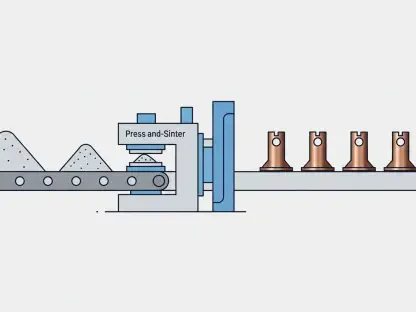As the digital landscape becomes more integrated into vital industries, cyber threats to critical infrastructure have reached unprecedented levels. In recent years, the increasing number of cyberattacks targeting the oil, natural gas, and other essential sectors has underscored the urgency to secure these pivotal assets. These sectors are not only foundational to national economies but also critical for national security. Amidst this backdrop, the importance of robust cybersecurity measures has never been more pronounced, prompting a thorough examination of current trends and future outlooks in safeguarding critical infrastructure.
The Current State of Cybersecurity in Critical Infrastructure
Evolution and Trends
Over recent years, the landscape of cyber threats against critical infrastructure has undergone considerable transformation. Notably, attacks have grown more frequent and sophisticated, endangering the stability of vital sectors. Data from cybersecurity agencies reveal a significant increase in incidents targeting industrial control systems (ICS) and Supervisory Control and Data Acquisition (SCADA) systems. Operational technologies critical to sectors such as oil and gas are persistently under threat from attackers leveraging weaknesses like poor cyber hygiene and exposed systems. The intricate nature of these attacks demands heightened vigilance, proactive measures, and continued adaptation to new threat vectors.
Applications and Case Studies
Despite the growing challenges, some sectors have implemented commendable cybersecurity measures. Industries have adapted by employing advanced technologies and novel strategies to bolster defenses. For instance, several oil and gas companies have invested in advanced threat detection systems to monitor and mitigate potential breaches effectively. These companies continually adopt innovative solutions to protect their operations, ensuring minimal disruptions and shielding against potential damages. These case studies illuminate the critical role of strategic investment and adaptation in defending against cyber threats, emphasizing the importance of comprehensive security frameworks.
Expert Insights on Cybersecurity Challenges
Insights from industry experts provide essential perspectives on the current cybersecurity landscape within critical infrastructure sectors. Specialists like Ensar Seker and James McQuiggan emphasize that even relatively unsophisticated attacks can inflict significant harm due to systemic vulnerabilities, such as outdated systems and inadequate ICS monitoring. Seker identifies the availability of industrial exploits and open-source tools as enablers for less skilled actors, potentially impacting critical operations like fuel distribution. Meanwhile, McQuiggan advocates for a proactive approach, viewing cybersecurity as an operational risk, urging rigorous testing through tabletop exercises.
Adding another dimension, Chris Hauk points out the growing prevalence of malware-as-a-service, simplifying attacks for less skilled hackers, highlighting the need for ongoing system updates and comprehensive strategies. Consistently, experts stress that prioritizing systemic improvements and enhancing defenses is crucial in mitigating emerging threats. Building resilience against these evolving threats requires not just technological upgrades but also effective risk management practices.
Looking to the Future of Cybersecurity Practices
Anticipated developments in cybersecurity hold the promise of transforming infrastructure protection strategies. Innovations in AI and machine learning are expected to enhance threat detection and response capabilities, offering more refined and quicker interventions against cyber threats. However, these advancements bring their own set of challenges, particularly the implications of integrating new technologies into existing systems, which can sometimes introduce vulnerabilities if not managed effectively.
As industries evolve, so too do the cyber threats they face. Emerging technologies and increasingly sophisticated attack methods necessitate continuous advancement in defensive mechanisms. While progress in cybersecurity practices presents opportunities for improved protection, sectors must remain vigilant and proactive in addressing potential hurdles. The future success of critical infrastructure protection hinges on striking a balance between leveraging new technologies and ensuring comprehensive security protocols are in place across all levels.
Conclusion
Over the last few years, there has been a significant evolution in cybersecurity within critical infrastructure, driven by the increased frequency and sophistication of threats. Emphasizing the urgent need to reinforce security measures, experts have highlighted strategies that have proven effective in some sectors. Proactive adaptation to emerging challenges, along with the integration of advanced technologies, appears to be the best course for the future. Looking ahead, the most successful organizations are likely those that combine cutting-edge technology with rigorous infrastructure protection measures, ensuring resilience against both current and future threats.









